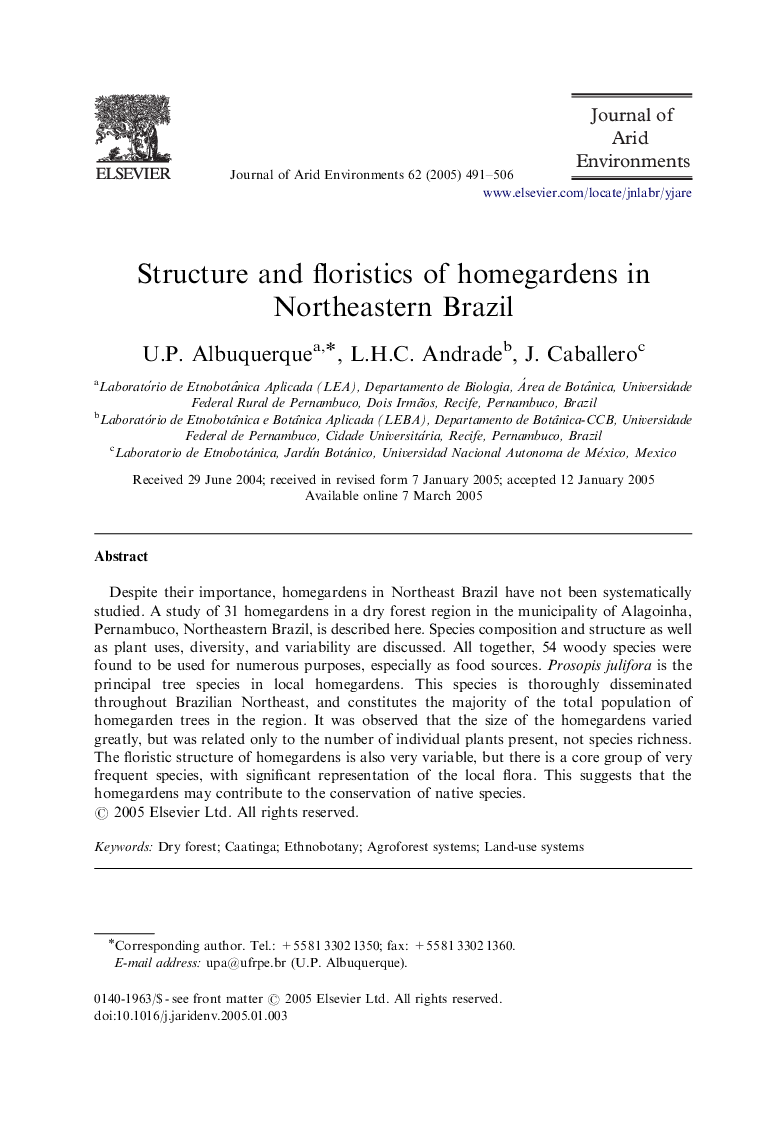| Article ID | Journal | Published Year | Pages | File Type |
|---|---|---|---|---|
| 9447824 | Journal of Arid Environments | 2005 | 16 Pages |
Abstract
Despite their importance, homegardens in Northeast Brazil have not been systematically studied. A study of 31 homegardens in a dry forest region in the municipality of Alagoinha, Pernambuco, Northeastern Brazil, is described here. Species composition and structure as well as plant uses, diversity, and variability are discussed. All together, 54 woody species were found to be used for numerous purposes, especially as food sources. Prosopis julifora is the principal tree species in local homegardens. This species is thoroughly disseminated throughout Brazilian Northeast, and constitutes the majority of the total population of homegarden trees in the region. It was observed that the size of the homegardens varied greatly, but was related only to the number of individual plants present, not species richness. The floristic structure of homegardens is also very variable, but there is a core group of very frequent species, with significant representation of the local flora. This suggests that the homegardens may contribute to the conservation of native species.
Related Topics
Physical Sciences and Engineering
Earth and Planetary Sciences
Earth-Surface Processes
Authors
U.P. Albuquerque, L.H.C. Andrade, J. Caballero,
